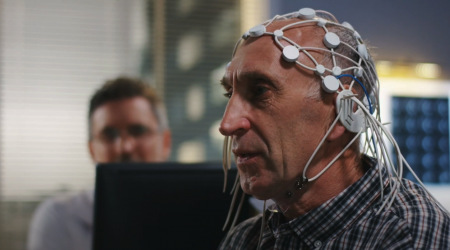Background: As many as 80% of stroke survivors experience upper limb (UL) disability. The strong relationships between disability, lost productivity, and ongoing healthcare costs mean reducing disability after stroke is critical at both individual and society levels. Unfortunately, the amount of UL-focused rehabilitation received by people with stroke is extremely low. Activity monitoring and promotion using wearable devices offers a potential technology-based solution to address this gap. Commonly, wearable devices are used to deliver a haptic nudge to the wearer with the aim of promoting a particular behavior. However, little is known about the effectiveness of haptic nudging in promoting behaviors in patient populations.
Objective: To estimate the effect of haptic nudging delivered via a wrist worn wearable device on UL movement in people with upper limb disability following stroke undertaking inpatient rehabilitation.
Methods: A multiple-period randomized crossover design was used to measure the association of UL movement with the occurrence of haptic nudge reminders to move the affected upper limb in 20 people with stroke undertaking inpatient rehabilitation. UL movement was observed and classified using movement taxonomy across 72 one-minute observation periods from 07:00 h to 19:00 h on a single weekday. On 36 occasions a haptic nudge to move the affected UL was provided just before the observation period. On the other 36 occasions, no haptic nudge was given. The timing of the haptic nudge was randomized across the observation period for each participant. Statistical analysis was performed using mixed logistic regression. The effect of a haptic nudge was evaluated from the intention-to-treat dataset as the ratio of the odds of affected UL movement during the observation period following a “Planned Nudge†to the odds of affected limb movement during the observation period following “No Nudge.†Results: The primary intention-to-treat analysis showed the odds ratio (OR) of affected UL movement following a haptic nudge was 1.44 (95% confidence interval [CI]: 1.28, 1.63; P<.001). The secondary analysis revealed the increased odds of affected UL movement following a Planned Nudge was predominantly due to increased odds of spontaneous affected UL movement (OR 2.03, 95% CI: 1.65 2.51; P<.001) rather than affected UL movement in conjunction with unaffected UL movement (OR 1.13, 95% CI: 0.99, 1.29; P=.07).
Conclusions: Haptic nudging delivered via a wrist-worn wearable device increases affected UL movement in people with UL disability following stroke undertaking inpatient rehabilitation. The promoted movement appears to be specific to the instructions given.
